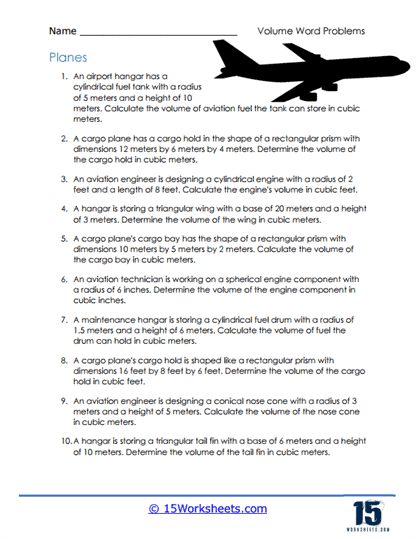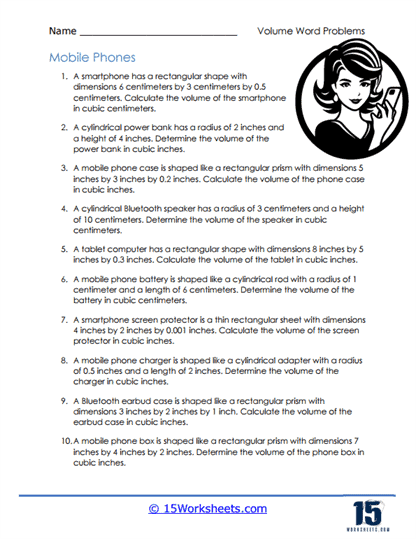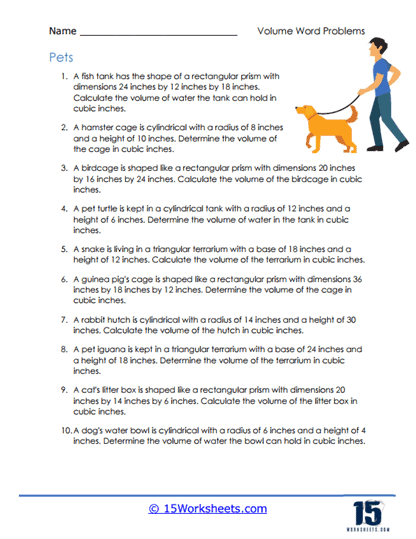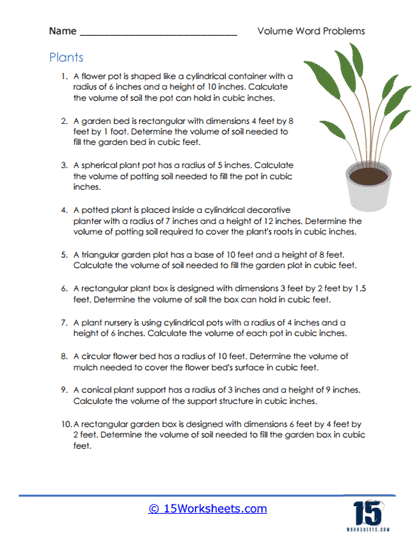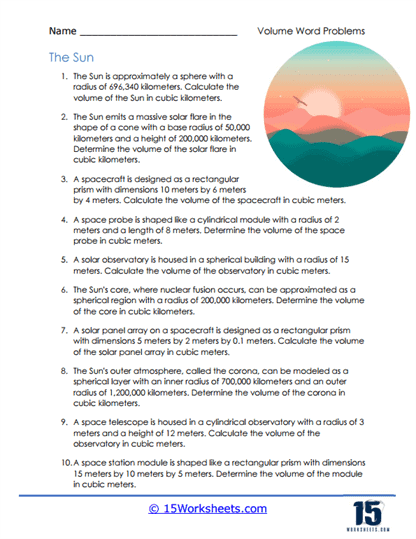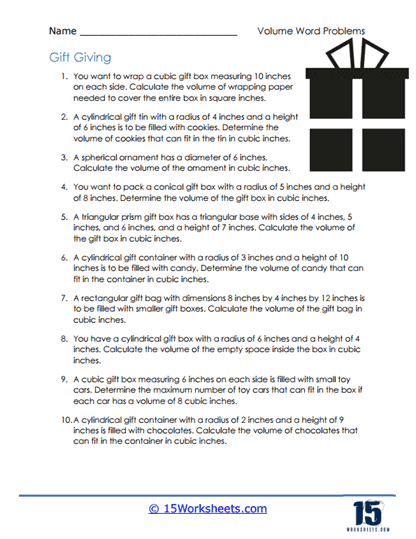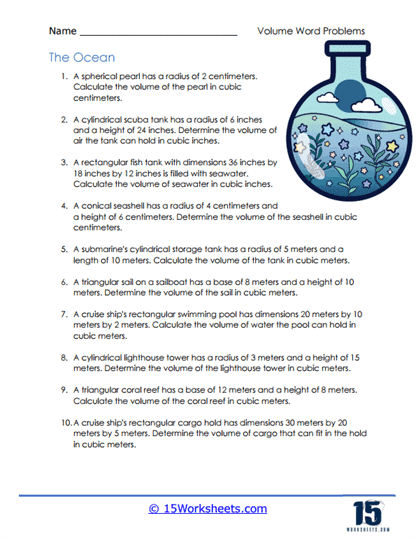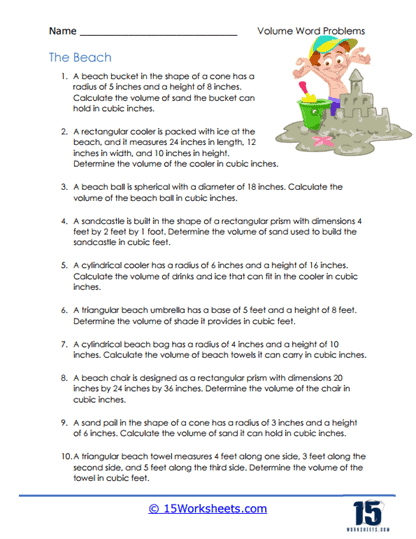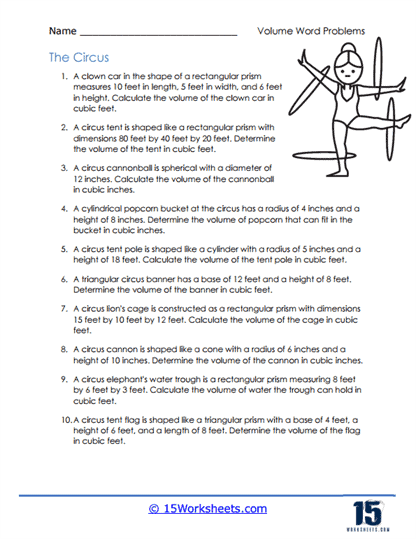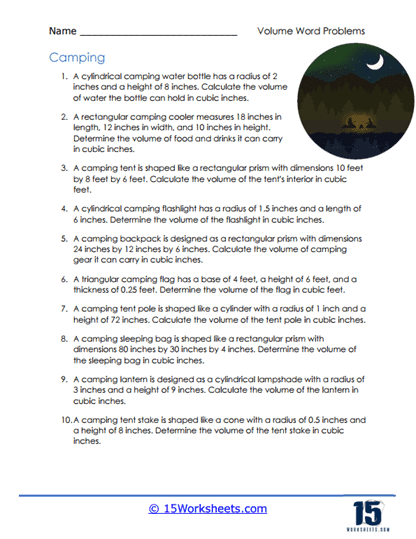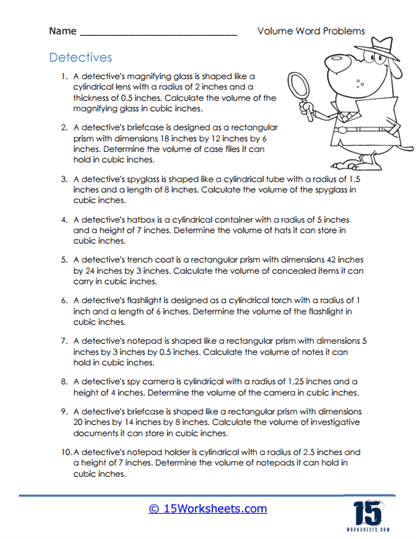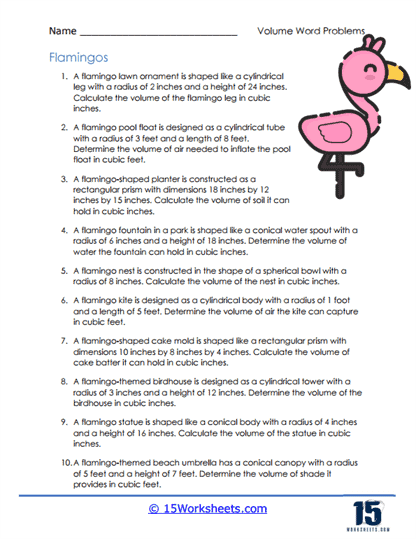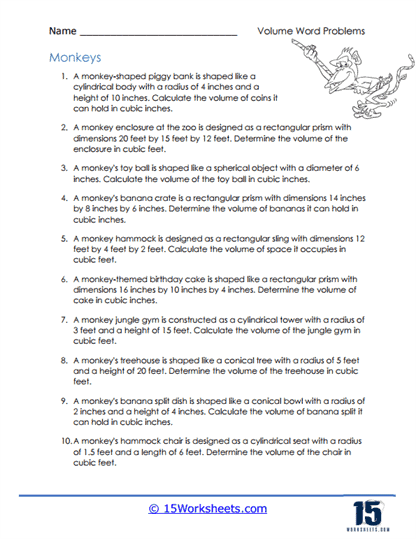Volume Word Problems Worksheets
About These 15 Worksheets
Imagine you have a box, and you want to fill it with toys. The space inside that box – the amount of room it has to hold things – is its volume. But how do we measure this space? That’s where volume calculations come in!
volume word problem worksheets provide you with challenges that make you apply your understanding of volume in various scenarios. Instead of directly telling you, “Find the volume of this cube,” the problems might present a situation, like, “How many toy blocks can fit inside this box?”
These problems might initially seem abstract, but they’re deeply rooted in our daily lives. Whether you’re cooking, shopping, or indulging in a hobby, volume plays a pivotal role. As you practice these problems, not only will you sharpen your mathematical acumen, but you’ll also better navigate the world around you. So the next time you pour a drink or pack a bag, remember the math behind it and take a moment to appreciate the magic of volume!
Types of Problems on these Worksheets
Regular Shapes – Problems that involve finding the volume of standard shapes like cubes, rectangular prisms, cylinders, cones, and spheres.
Composite Shapes – Questions about finding the volume of objects made up of multiple standard shapes combined, like a building with a cylindrical tower.
Filling and Emptying – Problems that require determining how long it might take to fill or empty a container at a given rate.
Scaling – Determining the new volume if a shape is enlarged or reduced.
Conversion – Switching between different units of volume, like liters to cubic meters.
Real-World Context – Situations involving practical applications, such as packing, storing liquids, or construction.
Why is this Skill Important?
Problem Solving – Volume problems make you think critically and apply mathematical formulas in context, developing your problem-solving abilities.
Understanding Space – Grasping the concept of volume helps students visualize and comprehend the space around them and how objects fit into spaces.
Building Blocks for Advanced Math – As you move forward in your math journey, you’ll find that concepts like volume play foundational roles in more complex topics.
Using Volume in Daily Life
Cooking – Measuring ingredients requires understanding volume, like when you use a cup of flour or a tablespoon of oil.
Packing – If you’re filling a suitcase for a trip, you’re dealing with volume.
Shopping – When buying liquids (like soda) or items packaged in containers, understanding volume can help you compare prices.
Home Projects – Activities like filling a pool, planting in a garden bed, or even painting a room involve volume calculations.
Hobbies – Crafts, model building, and even activities like fishkeeping require an understanding of volume.
Examples of Volume Word Problems
Example 1 – Regular Shape
Emily has a cube-shaped box that has a side length of 3 meters. How much space (volume) is inside the box?
Solution
Volume of a cube = side × side × side.
Volume = 3m × 3m × 3m = 27 cubic meters (m3).
So, the box has a volume of 27 m3.
Example 2 – Filling and Emptying
A tank can hold 500 liters of water. If water flows into the tank at a rate of 20 liters per minute, how many minutes will it take to fill the tank?
Solution
Time = Total Volume / Flow Rate.
Time = 500 liters / 20 liters per minute = 25 minutes.
It will take 25 minutes to fill the tank.
Example 3 – Real-World Context
Sarah is making a sculpture using clay in the shape of a cylinder. The cylinder has a height of 10 cm and a radius of 4 cm. How much clay (in volume) will Sarah need?
Solution
Volume of a cylinder = Π × radius2× height.
Volume = Π × 4^2 × 10 = Π × 16 × 10 = 160Π ≈ 502.65 cubic centimeters (cm3).
Sarah will need 502.65 cm3 of clay for her sculpture.


